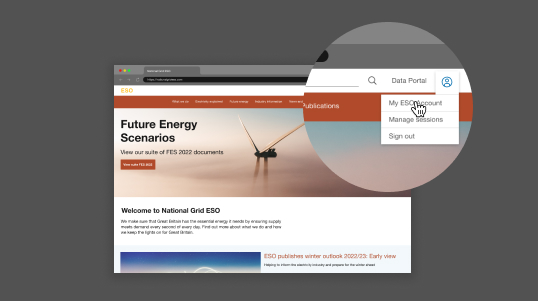While Great Britain’s electricity system is very reliable, power cuts happen for a variety of reasons.
At National Grid ESO we move high-voltage electricity around the country and pass it to distribution network operators who then reduce the voltage and distribute electricity to homes and businesses around the country.
When your home or business loses power, it is your distribution network operator responsibility for restoring power.
What to do if there’s a power cut in your area
- Make sure any appliances are switched off. Things like hair straighteners and irons might switch on once the power comes back.
- Call 105 to report a power cut to your distribution network operator. Calling 105 is a free-of-charge call from any network. National Grid, National Grid ESO and the electricity supplier that you pay your bill to, aren’t responsible for restoring power to your home.
- Check on your neighbours. If the power cut continues, you might want to check on your neighbours, especially if they are elderly or ill.
In the event of a power cut more information will be provided on the Power Cut 105 website.

Who is my distribution network operator?
Who your distribution network operator is depends on where you live in the country.
Call 105 or use the 105’s online postcode checker to find out who your distribution network operator is.

Why do power cuts happen?
National power cuts in Great Britain are rare these days. Local outages still occur though, and are usually caused by:
- Acts of nature – lightning strikes, flooding and fallen trees can all cause damage to cables and equipment
- Accidents – damage to cables can come from contractors working on equipment or even from people digging in their own garden. Insulation of cables can also fail as it’s difficult to predict when this will happen.
- Fire or theft – which damages the equipment on the network or in substations.
Local outages are not the responsibility of National Grid ESO, but the distribution network operators (DNOs) who maintain the power lines that connect your home or business to the transmission network.

How to report a power cut to your distribution network operators
Distribution network operators are responsible for restoring power to your homes and businesses.
You can call 105 to report or get information about power cuts in your local area.
You can also call 105 if you spot damage to electricity power lines and substations that could put you, or someone else, in danger.
If there’s a serious immediate risk, you should call the emergency services too.
If you already know who your local distribution network operator is, contact them directly on using the details below.
| Distribution network operator | Areas covered and phone numbers | |
| Electricity North West | North West England 0800 195 4141 |
@ElectricityNW |
| National Grid | Midlands, South West England and South Wales 0800 6783 105 |
@gridcustomersuk |
| North Power Grid | York, Leeds, Sheffield, Northern Lincolnshire and Yorkshire 0800 66 88 77 |
@Northpowergrid |
| Scottish and Southern Electricity Networks |
Northern Scotland Central Southern England |
@ssencommunity |
| SP Energy Networks |
Cheshire, Merseyside, North Wales & North Shropshire Edinburgh, Glasgow, Central & Southern Scotland |
@SPEnergyNetwork |
| UK Power Networks | London, South East and East of England 0800 31 63 105 |
@UKPowerNetworks |

